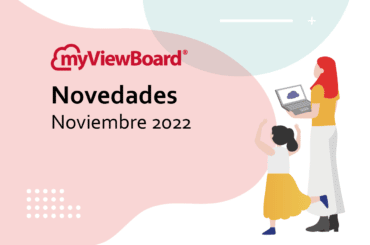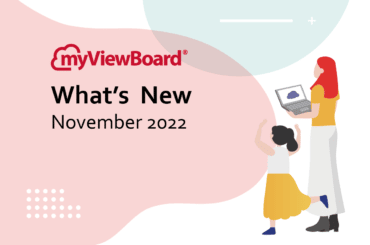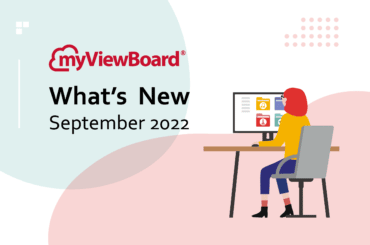This post is also available in: Español (Spanish) 繁體中文 (Chinese (Traditional)) Français (French)
Hybrid learning is helping to transform the way education is delivered, but it is important to understand some of the key challenges of hybrid learning too. Additionally, once these challenges are fully understood, educators need to find ways to overcome them and deliver an excellent learning experience for students who are physically present and for those who are learning remotely.
Keep reading for a breakdown of four challenges associated with hybrid learning and their solutions.
The concept of hybrid learning can be broadly defined as synchronous learning, which combines in-person and remote learning simultaneously – bridging the gap between the two – and while it can provide some excellent advantages, it is equally important to acknowledge some of the challenges of hybrid learning as well.
In this article, we will cover four of these challenges in more detail, exploring why they exist, what their impact is on lessons and, most importantly, what teachers and students can do to overcome them.
Difficulties With Student Engagement
One of the main potential challenges of hybrid learning revolves around the concept of student engagement. In particular, it can be a challenge to keep both the students who are physically present in the classroom and the students who are learning remotely as engaged as each other, in order to deliver an equal learning experience.
Many of the methods teachers use to boost student engagement in classroom settings may not be possible with a hybrid learning setup, because remote learners would potentially be excluded from those efforts. At the same time, concentrated efforts to engage remote learners could result in those in the classroom becoming disengaged too.
How to Overcome This
One solution here is to try to focus on student engagement activities that are applicable regardless of the learning method. For instance, active learning can be achieved through things like group classroom discussions and quizzes, and both of these can potentially be facilitated through technology like screen sharing and live streaming technology.
Teachers can also use a combination of technology and their own presence within the classroom to keep an eye out for some of the classic signs of student disengagement. These include a lack of eye contact, facial expressions that indicate boredom, and a lack of participation in group discussions and similar activities.

The Potential for Technical Issues
Another possible problem that may arise when adopting a hybrid learning approach is the emergence of technical issues. These can take many different forms, but if members of a class or a course do experience difficulties in this area, it can not only disrupt their own learning, but also the learning of other students.
Remote learners could have a range of different technical issues, from sound problems or difficulties connecting to a live stream, through to more complex issues with their computers or an inability to use software that is critical to the course. Depending on the severity, they could make it almost impossible to obtain a good learning experience.
It is also important to remember that hybrid learning often requires the use of technology within the classroom too and this also has the potential to cause technical problems and disruption to lessons.
How to Overcome This
This is one of the challenges of hybrid learning that is most difficult to overcome, because technical issues can affect people in different ways, at different times, meaning there is no ‘one size fits all’ solution. However, some of the potential harm can be avoided through training, so teachers know how to deal with common problems.
Another possible option to reduce disruption is to ask remote learners to connect to the lesson a few minutes early, whenever possible. Doing so will give you some time before the lesson begins to try to identify any technical issues and to try to find solutions to them. You could also record and upload lessons so that anyone who experiences serious technical difficulties will still be able to catch up on the lesson at a later point.
This then means that any technical issues experienced by those within the classroom can be dealt with swiftly, without needing to simultaneously tackle remote issues too. As a result, disruption should hopefully be minimized.

Problems Facilitating Collaboration
The concept of collaborative learning forms a fundamental part of many courses and can enhance the learning experience. In fact, the benefits of collaborative learning include increased social interaction, the development of team working skills and the ability to further embed knowledge, which can improve long-term retention.
However, in a hybrid learning setting, collaboration is more difficult to facilitate. In traditional classroom settings, learners can be physically placed into groups, but this is not viable when some students are learning remotely. Therefore, the combination of the two learning strategies presents an obstacle to collaboration.
How to Overcome This
Fortunately, effective use of EdTech can help to break these barriers down. For example, myViewBoard allows all members of a hybrid learning class to turn to shared whiteboarding, screen sharing and live annotations, while ‘Huddle’ groups can also be formed easily, allowing multiple different collaborative groups to be created and kept apart.
When digital whiteboarding technology is available and students are taught how to use it, there is no reason for learners to miss out on collaborative activities and no reason to separate remote and in-person learners. Meanwhile, synchronous communication options, such as online chats, can help to replicate many of the benefits of in-person interactions.

Sharing Files and Learning Materials
When the people who are participating in a hybrid learning course are doing so from different physical locations, there is going to be a clear need to share files, learning materials, and other content between devices. However, this requires a clear strategy for ensuring this can be done safely and without causing disruption to lessons.
Compatibility can be another key issue here. Imagine a scenario where a student who is learning remotely needs to send a file to someone in the classroom because they are collaborating on a project. The two students are using different software to work on the project and the student who receives the file is unable to open it.
These kinds of issues can cause substantial delays and can result in learners being unable to access key material.
How to Overcome This
The main solution here is to try to standardize the technology people use both during lessons and between lessons. While you are unlikely to be able to standardize the hardware people rely on, you can potentially create a degree of uniformity through cloud computing technology and solutions like Microsoft Office 365.
Cloud file-sharing options also provide a great way to facilitate file sharing in a safe environment, where protective measures like passwords can be used and where access can be easily restricted to those who actually need it.

Final Thoughts
Hybrid learning is a growing concept, and it has the potential to significantly expand access to education while supporting different learning preferences. Nevertheless, there are some key challenges to be aware of. Understanding both the challenges of hybrid learning and the solutions to them can help to ensure everyone reaps the rewards.




